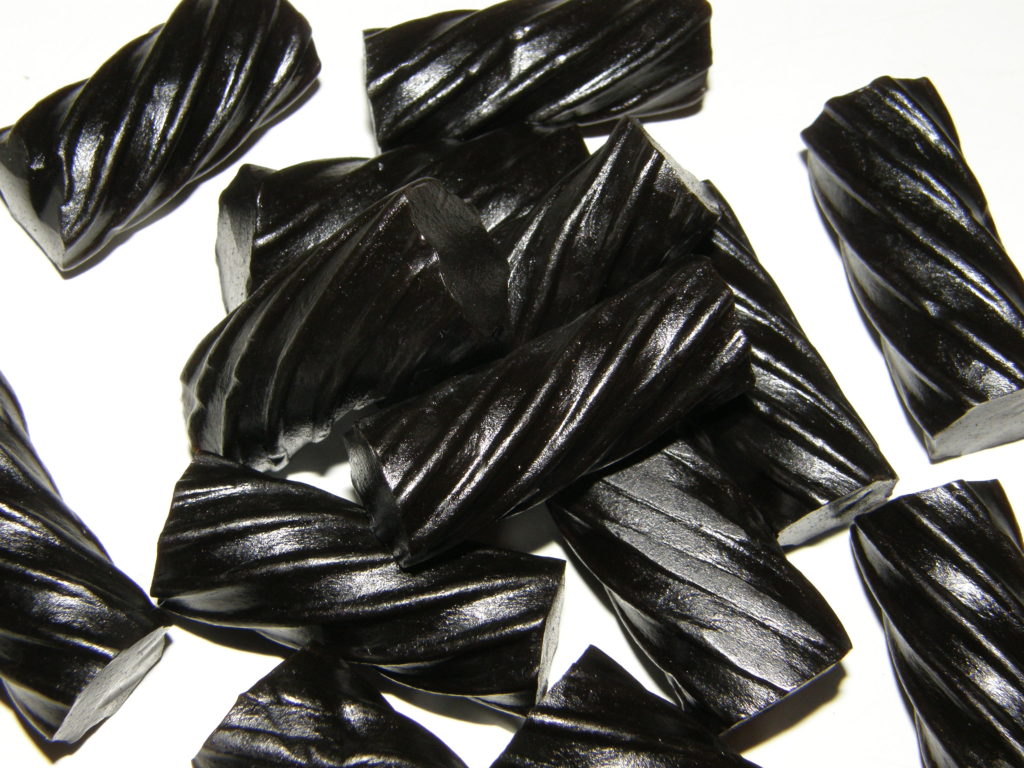All fields are required
Posted in Food Safety on October 30, 2018

As if you needed a reason to avoid black licorice. You know, that old-fashioned candy reminiscent of the bottom of your grandmother’s candy dish with 10 pieces stuck together in one hard glob of grossness that smells of old toothpaste and sad dreams. Sorry. Is that just me? I didn’t think so.
If you don’t like black licorice, you are not alone. The Candy Store conducted a survey of 40,000 people to find out the most hated Halloween candies. I actually expected it to be further on the more hated end of the list. Ranked at 8, was licorice in a category of 11 of the most hated Halloween candies. Just for a bit of reference, the number one most hated candy was Circus Peanuts. That confusing candy called a “peanut” but is actually a marshmallow that tastes like bananas in the shape of a peanut and somehow colored orange. Yeah. That one. Circus Peanuts being number 1 makes sense.
Others on the list less hated included: Good & Plenty (which is also a licorice candy), Mary Janes (that taste like the paper stuck to the sticky candy you can’t peel off), and Bit O’ Honey (that tastes more artificial than the honey it claims to imitate).
While the Candy Store blog post indicated that licorice does not include Twizzlers, any other licorice is on the chopping block at Halloween they say.
Licorice is a Real Plant?
Where does the licorice come from, you ask? If the flavor is derived from true licorice (or liquorice), it comes from a low-growing shrub. These are mostly grown for commercial use in the Asia, Greece, and Turkey. According to the National Institutes of Health (NIH), the plant’s root has historically been used as a folk or natural remedy found in both Eastern and Western medicine.
As a medicine, it can be used to treat bronchitis, cough, sore throat, heartburn, stomach ulcers, and some infections that are caused by viruses, such as hepatitis. While licorice root is used in remedies by many holistic medicine experts, NIH indicates there is not sufficient data available to determine if licorice is actually effective in treating any medical condition.
What’s the Harm? It’s Just Candy.
While it can’t be argued that most candy is not good for your health. Some, such as licorice can be out right dangerous. But it is just candy. What could possibly be the harm besides cavities and diabetic risk? As it turns out, the United States Food and Drug Administration (FDA) warns against eating too much black licorice. Particularly if you are 40 years or older.
Eating as little as 2 ounces of black licorice a day for at least two weeks could be enough to land you in the hospital due to irregular heart rhythm or arrhythmia. This is due to a compound found in licorice root called glycyrrhizin. This is the compound responsible for the sweet taste (if you could call it that) in the plant. Glycyrrhizin affects potassium level in the body, making them fall to dangerous levels. This can promote high blood pressure, edema (swelling), lethargy, abnormal heart rhythms, and even congestive heart failure!
According to FDA’s Linda Katz, M.D. last year the agency received a report of a black licorice aficionado who consumed an overdose of the candy. In addition to that, several medical journals have linked health problems in people over 40 to black licorice. Some of those indicated already had a history of heart disease and/or high blood pressure, but the correlation is enough to pay attention to.
Stop Eating Before It is Too Late!
Fortunately, you can do one simple thing to avoid fatal affects of the candy once you realize you are experiencing a problem. Stop eating it. Yes. It is as simple as that. Katz explains that the potassium levels usually go back to normal without permanent health problems once you cease consumption of the black licorice.
Love the Stuff? You Might Have Options.
If you are one of the strange few that love the stuff, not just for its potential claimed health benefits. If for some reason you actually enjoy this obscure treat, you might have options after all.
Most modern candy does not include actual licorice root anyway. While licorice is used as a flavoring in foods, many “licorices” or “licorice flavor” candies or products manufactured in the United States contain no true licorice root. Instead, they often contain anise oil, which has a similar taste and smell as licorice root.
Also, the dietary supplement, licorice root, is often sold with the harmful compound, “glycyrrhizin” removed. This is also known as “deglycyrrhizanted licorice, or DGL, says NIH. This form is much safer to use for chronic treatment to avoid the harmful effects that glycyrrhizin can cause.
FDA Advice on Black Licorice
If you just can’t help yourself and are unsure whether your candy contains true licorice root, the FDA has some advice.
Our mission is to help families who have been harmed by contaminated food or water. When corporations cause food poisoning outbreaks or injuries, we use the law to hold them accountable. The Lange Law Firm is the only law firm in the nation solely focused on helping families in food poisoning lawsuits and contaminated water lawsuits.
If you got sick from black licorice and are interested in making a legal claim for compensation, we can help. Our lawyer can help you pursue compensation for your food injury. Call us for a free no obligation legal consultation at (833) 330-3663 or send us an e-mail here.
By: Heather Van Tassell, Contributing Writer (Non-lawyer)